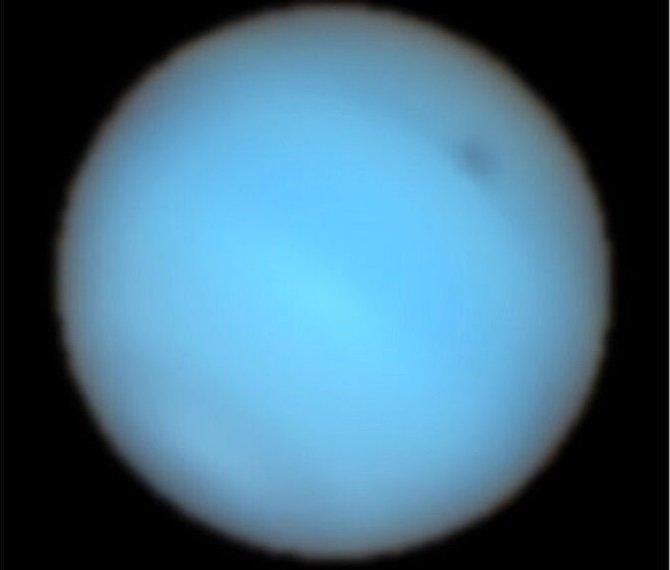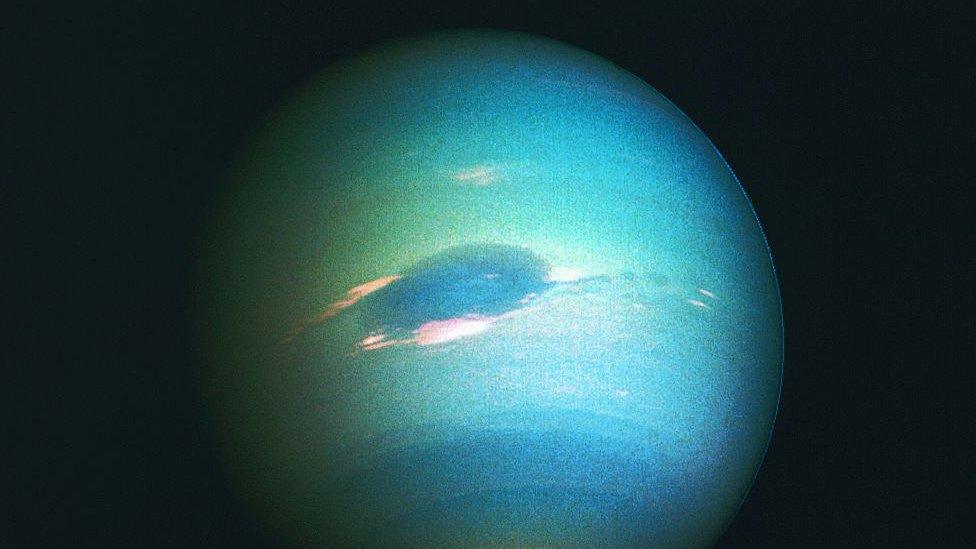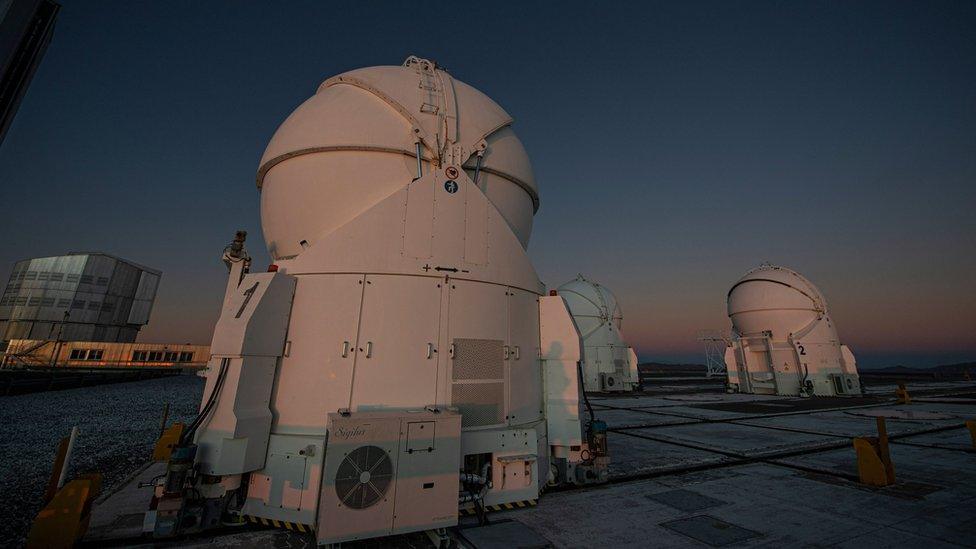What is the big spot on Neptune?
- Published

It might look like a blurry blue ball, but this is a picture of Neptune taken through a very powerful telescope in Chile
Neptune is known for being cold, windy, dark - and now spotty.
Scientists studying the planet have seen a spot on the surface using a telescope for the very first time.
The team of astronomers discovered the large, dark area and noted it was next to a smaller, brighter spot.
"Blemishes" on planets are common. Jupiter has possibly the most famous spot, but this is the first time scientists on Earth have been able to examine one on Neptune.
Dark areas were first detected on Neptune back in 1989 with the help of observation satellite Voyager 2, but they disappeared a few years later.
The scientists have now been able to see them with their own eyes using the European Southern Observatory's (ESO) Very Large Telescope (VLT) which is based in located in the Atacama Desert of northern Chile.
If you cannot see the quiz, click here.
What causes Neptune's spot?
It is difficult for scientists to know for sure what causes the spots.
But using new technology, and new data, they can rule out the possibility they were caused by clearing in the clouds above the planet's surface.
New studies suggest the dark spots are likely to be the result of air particles darkening as ice mixes with Neptune's atmosphere.

This photo of a spot was taken by the spacecraft Voyager-2
Co-author Michael Wong, a researcher at the University of California, Berkeley, in the US, said: "This is an astounding increase in humanity's ability to observe the cosmos.
"At first, we could only detect these spots by sending a spacecraft there, like Voyager.
"Then we gained the ability to make them out remotely with Hubble Telescope. Finally, technology has advanced to enable this from the ground."

The VLT - the Very Large Telescope in Chile helped astronomers to make the discovery
Patrick Irwin, professor at the University of Oxford and lead investigator of the study, said: "Since the first discovery of a dark spot, I've always wondered what these short-lived and elusive dark features are."
The research, published in Nature Astronomy, began after NASA and the European Space Agency's Hubble Space Telescope discovered several dark spots in the planet's atmosphere, including one in Neptune's northern hemisphere in 2018.
